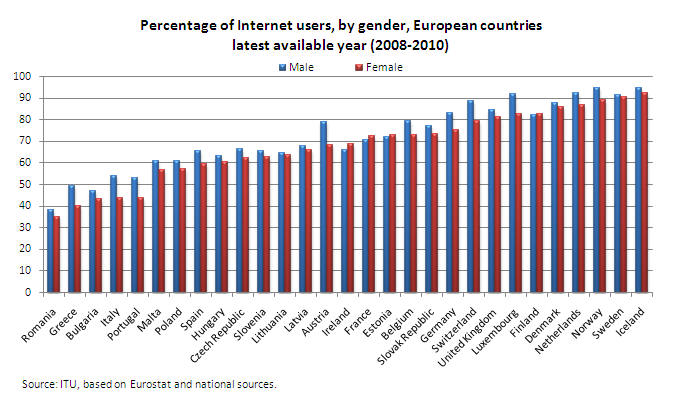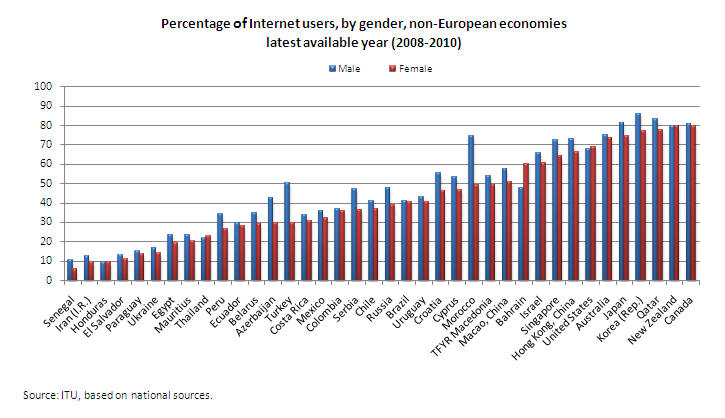|
Since 2004, under the framework of the
Partnership on Measuring ICT for
Development, the ITU has been working together with National
Statistical Offices from developing countries around the world to improve the
availability and quality of statistics on ICT access and use by households and
individuals. To this end, ITU has been providing
training courses on measuring ICT access
and use by households and individuals in developing countries and
collected data gathered through official household surveys, through an annual
questionnaire. Data
collected on use of ICTs by individuals include breakdowns by gender, age,
educational attainment, urban/rural, labour force status and occupation, and
include information on the use of the Internet, computers and mobile cellular
phones.
Gender-disaggregated data collected through official surveys are nationally
representative, reliable and can be compared among countries, and over time.
They provide an important input for policy making, especially since the
inclusion of socioeconomic and demographic variables - including age, income
levels, educational attainment, etc. - provide in-depth information on the use
of ICTs by men and women. By 2010, 72 countries out of ITU's total membership
(192) had been collecting ICT use data through official surveys. Thirty-four
developing economies had collected ICT use data between 2008 and 2010 and
most of these countries collect data on Internet users disaggregated by
gender.
The
following two charts show the percentage of Internet users, by gender, for
European countries (left) and non-European countries (right), for the latest
available year (2008-2010). Click on chart to see data.

 |



